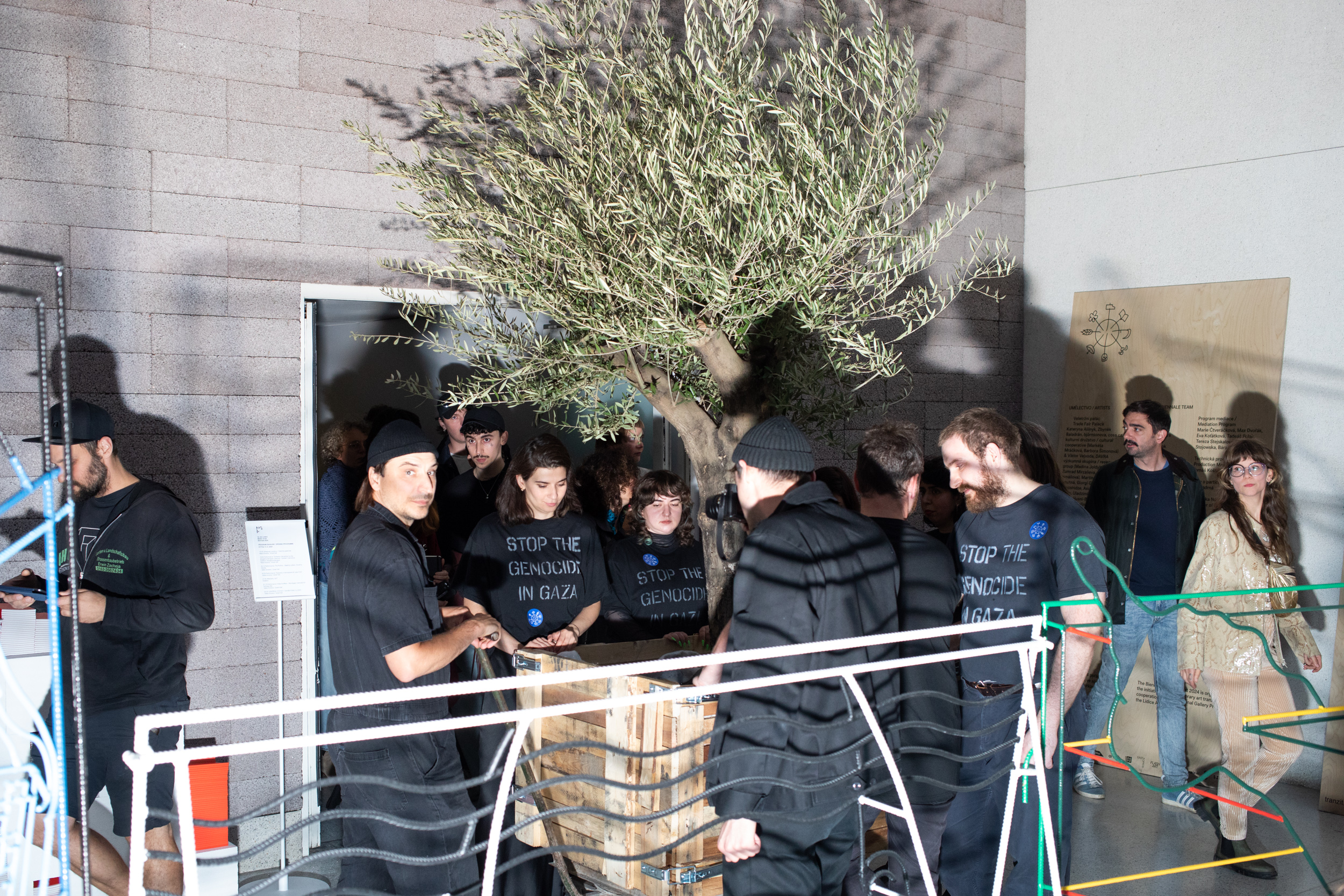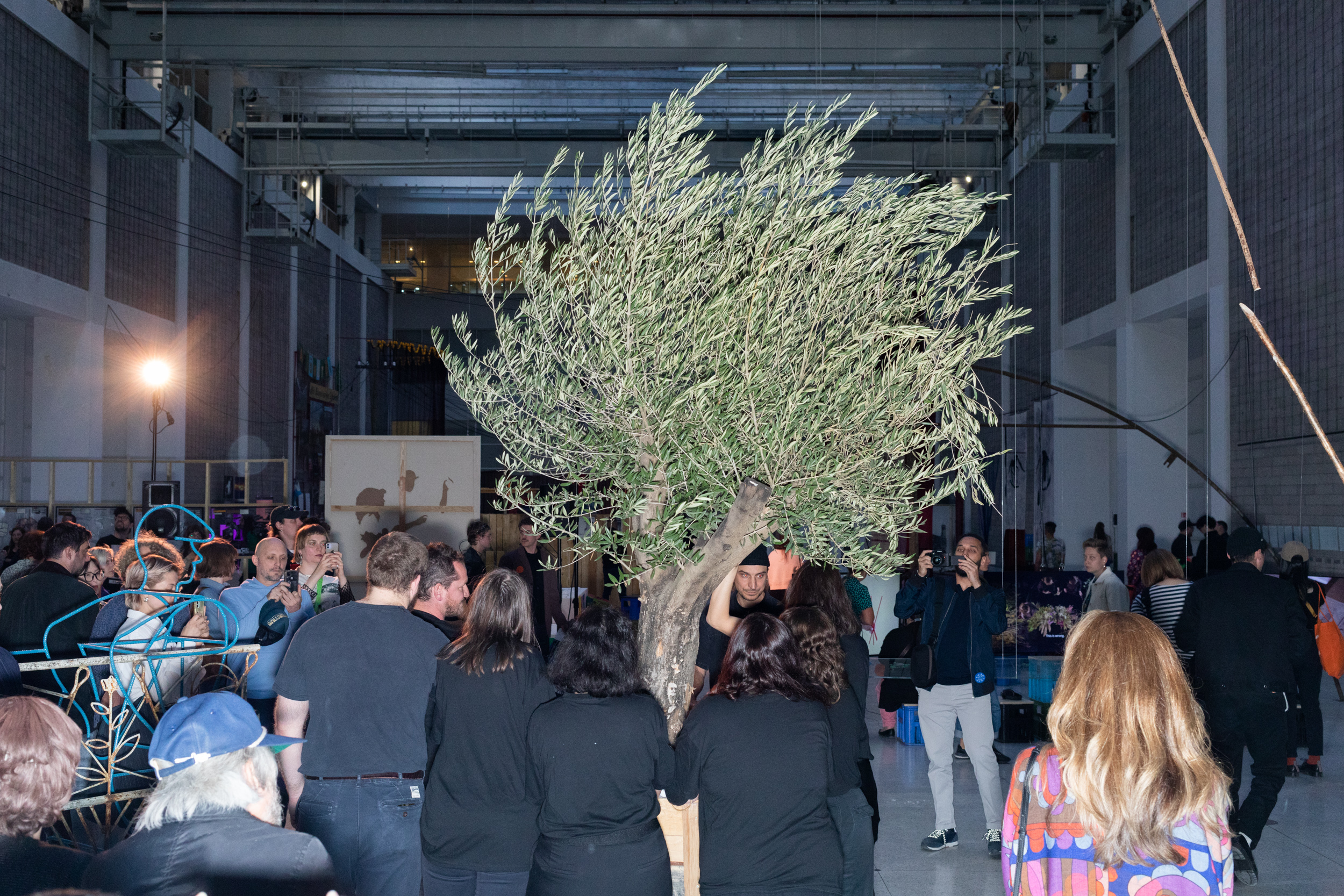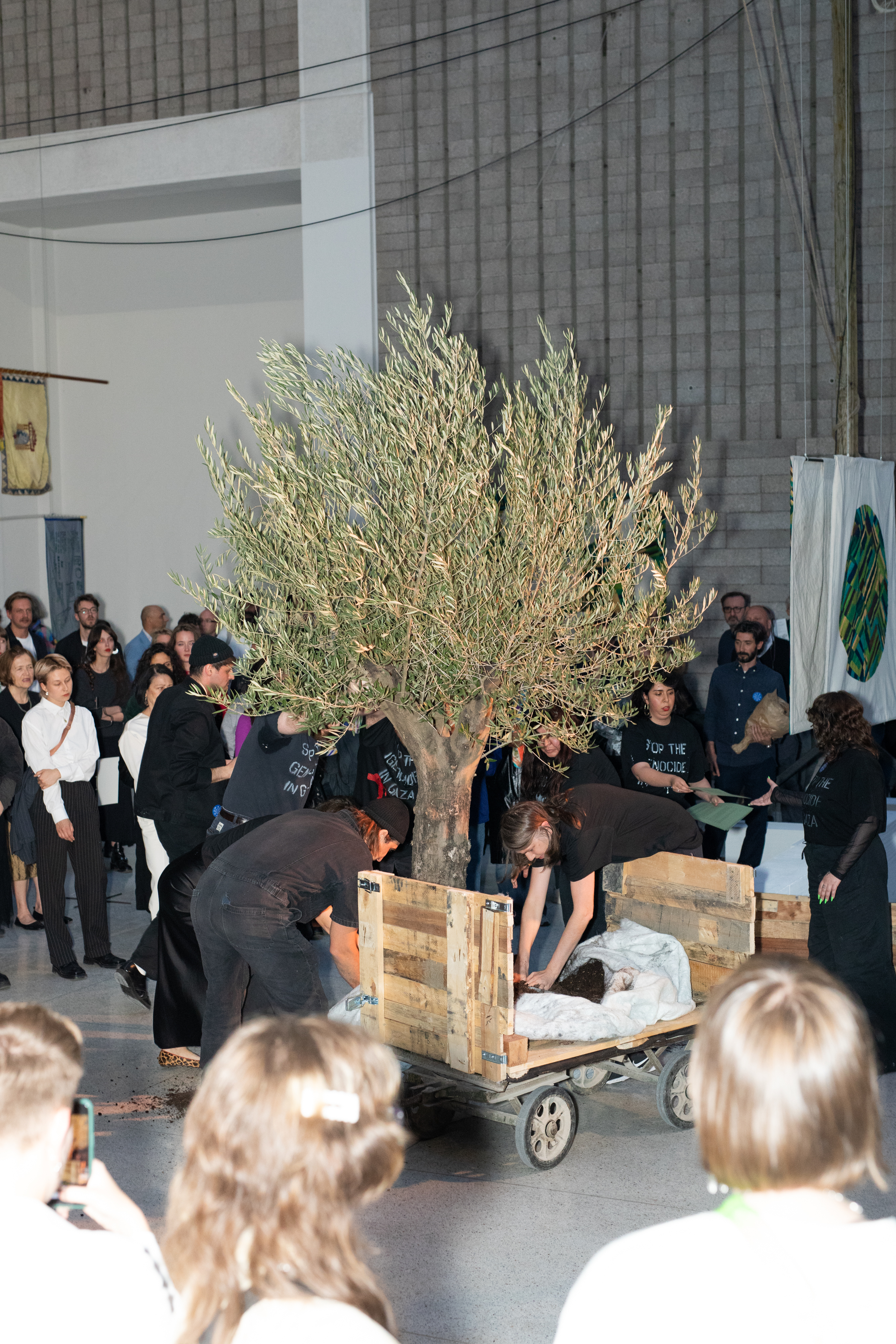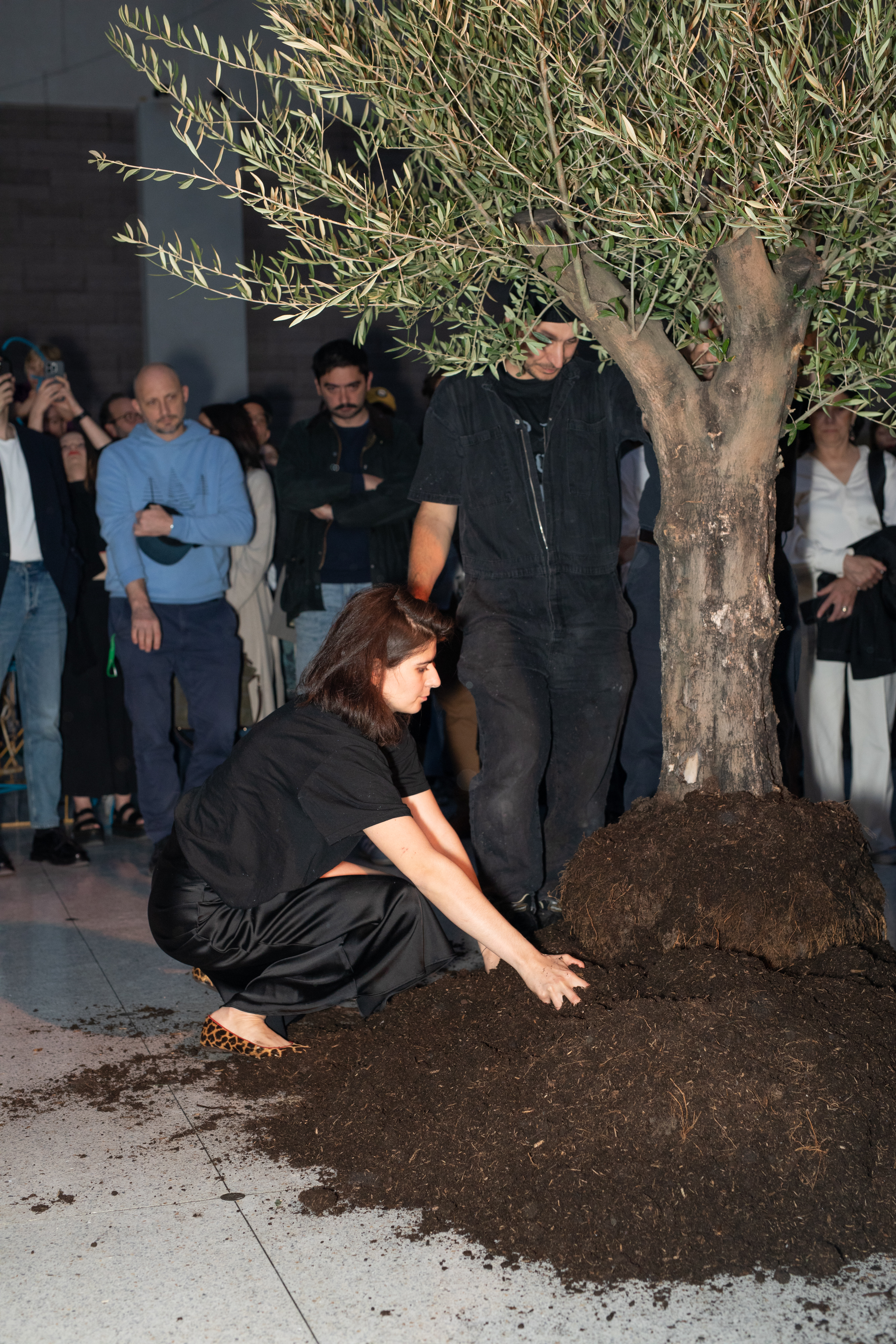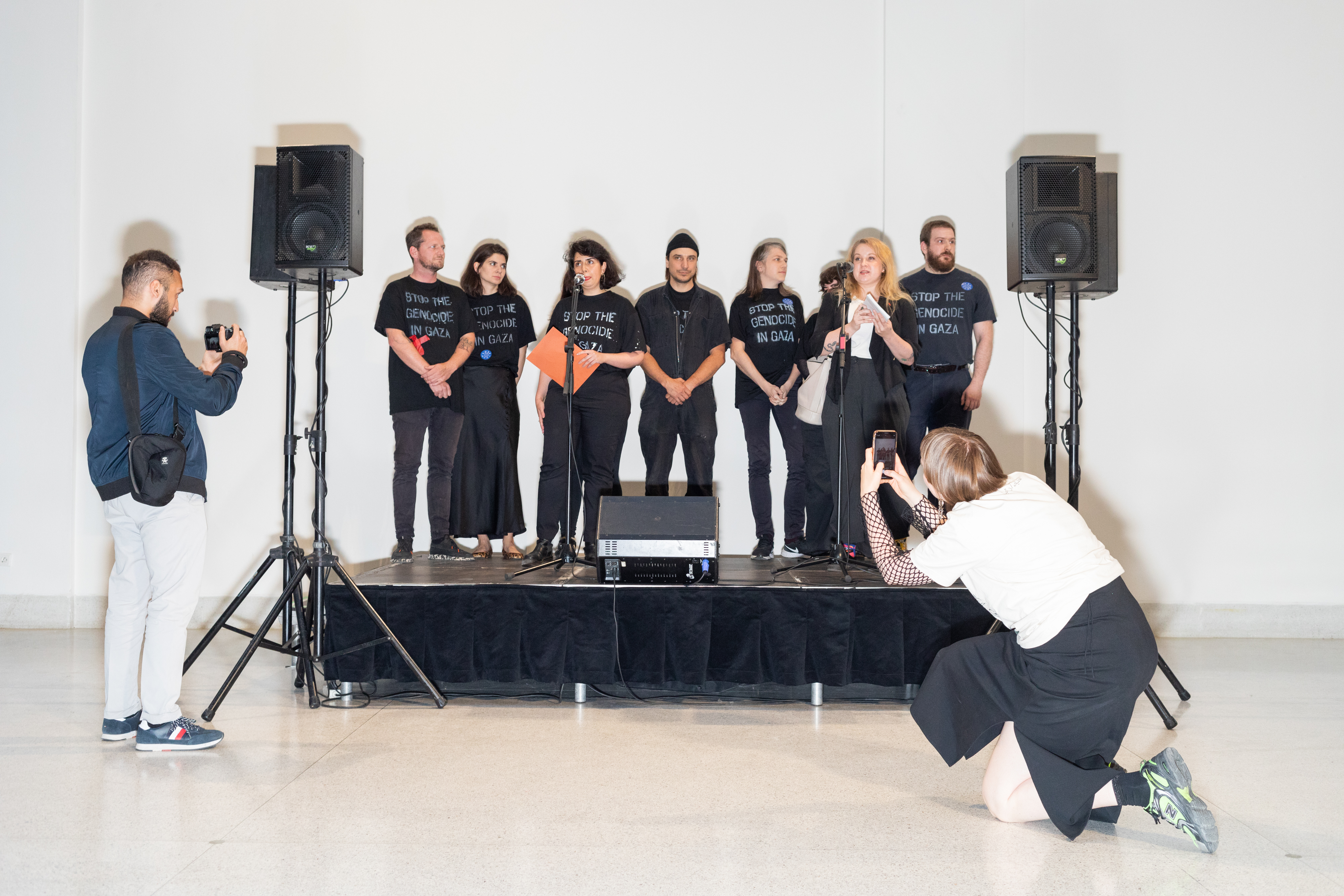SOLIDARITY INTERVENTION BY STOPGENOCIDEVGAZE
Work exhibited in the Trade Fair Palace:
stopgenocidevgaze collective (Yara Abu Aataya, Lynda Zein, Epos257, Kajetán Adler Jablonský, Vladimír Turner, Irena Lehkoživová, Jaroslava Tomanová, Tomáš Kajánek, Sany, Shawky Gamal) – Do you think all those olive trees are in paradise?, 2024
Performance at the opening of the Biennale Matter of Art 2024, National Gallery Prague – Trade Fair Palace (c) Jonáš Verešpej
The collective stopgenocidevgaze returns to the Trade Fair Palace for the second time in the scope of the Biennale Matter of Art. As part of its performance during the opening, it will bring a centuries-old olive tree into the space, which it will then let die gradually over the course of the exhibition from June to September. In doing so, they imaginatively connect the tree with the tragic fate of the Palestinians in Gaza and the occupied West Bank.
At the opening, the collective will read texts from the book just published by Utopia Libri Jestli mám zemřít, ať je to příběh: Palestina v českých perspektivách [If I have to die, let it be a story: Palestine in Czech perspectives]. They will focus on stories that comment on uprooting, land, agriculture, and the relationship of Palestinians to local vegetation.
The decision to place an olive tree in the gallery as a symbol of the Palestinian cultural heritage and national identity has a number of goals. The group of artists aims to awaken empathy within Czech society, to draw attention to the humanitarian crisis in Gaza, and to appeal to the Czech political representation to call for the declaration of a permanent ceasefire. At the same time, it expresses increasing frustration with the silence of art institutions and the bias of the Czech media. Unlike other exhibits, the olive tree is not a part of the exhibition; it is placed there as a foreign object precisely because it concerns a topic which in the Czech Republic is strongly linked with the rejection of all that is “foreign.” An integral component of the work is also the very question it raises: Is it ethical to leave an olive tree to wither and die inside the National Gallery? What does it symbolize?
This event is part of the first day of the Biennale opening weekend.
The olive tree is deeply rooted in the minds and hearts of the Palestinian people.
It represents intergenerational practices of caring for the preservation of native vegetation and people’s sense of belonging to the land and place, their cuisine, and home. Some olive trees can be as much as 2000 years old – individual trees therefore remember generations of locals. Olives are also an important factor in the Palestinian economy and a source of livelihood: olive oil alone accounts for a quarter of the West Bank’s production and is their second largest export item. To this day, there are between 80,000 and 100,000 families in the Palestinian territories who depend on olives and olive oil as their main or secondary source of income.
The current genocide in Gaza and the upsurge in violence against the population of the West Bank entail, among other things, the escalation of a long-standing strategy to destroy the traditional way of life of the Palestinian people – the destruction of olive orchards. The Israeli state is not only demolishing human habitations but also destroying the Palestinian cultural and agricultural heritage. The drive to eradicate agriculture is an essential component of settler colonialism, which aims to wipe every aspect of the indigenous people and their identity from the face of the earth.
Rural communities that have cared for olive trees for generations are routinely targeted by illegal settlers who seek to deprive them of their land and livelihood. The Applied Research Institute – Jerusalem reports that since 1967, Israeli settlers have destroyed 800,000 old olive trees and hundreds of thousands more fruit trees in the West Bank alone. There, in coordination with the army, they seize and expropriate land and then cut down the trees, uproot them with bulldozers, or burn them along with everything that grows around them.
However, the olive tree is not only a symbol of the efforts to drive the Palestinians from their home territory and the wanton destruction of the environment; it is also a symbol of the resilience and defiance of the Palestinian people. To prevent the demise of the region’s 5000-year-old agricultural industry, Palestinian farmers plant approximately 10,000 new olive trees every year.
The Prague-based art collective stopgenocidevgaze was created to highlight the silence surrounding the humanitarian crisis in Gaza. Its first joint action was a guerrilla happening which disrupted the official opening of the National Gallery Prague’s spring season in order to express solidarity with the Palestinian population and to appeal for a change in the attitude of the Czech media and art institutions. The collective is now returning to the National Gallery with a new project to continue its mission: to spread awareness of what is happening in Palestine and to change the mainstream narrative in the Czech public space.
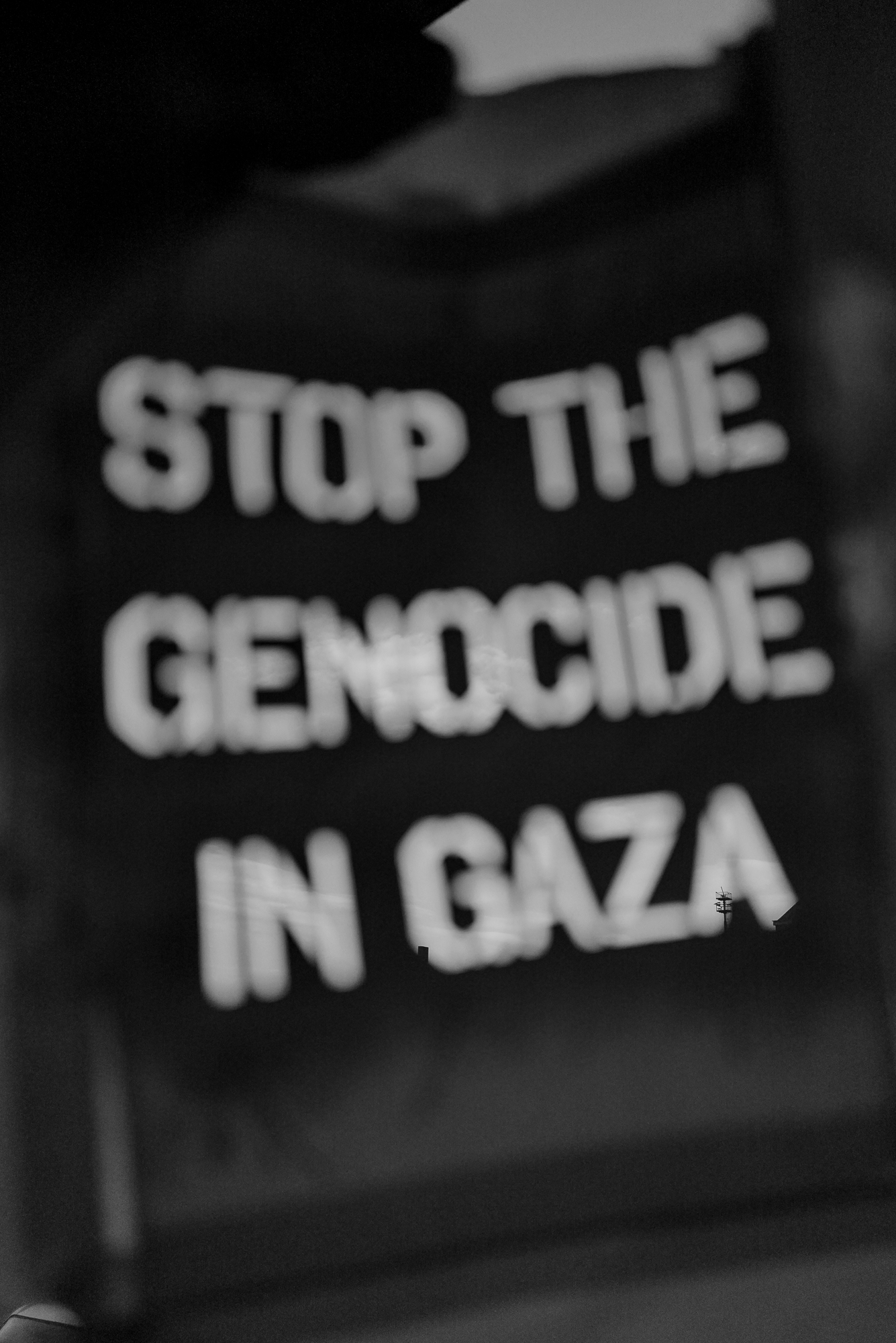
Kajetán Adler Jablonský
